Bearded dragons can only be found on the continent of Australia. There are a handful of bearded dragon species living in different parts of Australia, but most live in the arid interior of the Australian outback.
The preferred bearded dragon habitat tends to be places without much water, and much of the Australian interior fits that description.
Did you know?
Australia banned the export of bearded dragons in the 1960s, but now there’s a large enough breeding population among US dragon owners that there’s no need to bring them in. So any bearded dragons you’ve seen were likely born in captivity in the United States.
Where are bearded dragons from within the continent of Australia?
The most common pet species of bearded dragon is the central bearded dragon, which are found in the eastern-central interior of Australia, in the states of Queensland, South Australia, Northern Territory and New South Wales.
Another popular bearded dragon species, the Rankins dragon, is found more toward the northeast, solely in the state of Queensland. There are a number of other bearded dragon species less commonly found as pets.
There’s an eastern bearded dragon, which is found more toward the eastern coast of Australia. Species called the Kimberly bearded dragon and the Drysdale River bearded dragon are located in the central regions of Australia.
There’s even a tiny species of bearded dragon called the dwarf bearded dragon which is found only on a chain of islands off the western coast of Australia.
All of these bearded dragon species tend to like the same types of climates and habitats, and seek out similar living territories.
Bearded Dragon Habitat
Bearded dragons are mainly found in Australia, but what habitat do bearded dragons acutally live in?
In the wild, bearded dragons are mostly thriving in deserts, rocky semi-desert areas and arid woodlands.
Bearded dragons aren’t a true desert species that can survive in the near-total absence of water, but they do very well in regions where water is scarce.
Bearded dragons are particularly drawn to areas containing many rocky outcroppings and ledges on which they can perch during the day.
They also thrive in areas with an abundance of vegetation and brush, which they forage through in search of food.
Juvenile bearded dragons feed primarily on insects, and they need protein in order to grow. Once they reach maturity, bearded dragons eat a mixture of plant matter and insects, meaning they tend to inhabit areas with heavy insect populations.
Like all lizard species, bearded dragons aren’t able to regulate their internal temperatures. In order to survive during temperature fluctuations, they have developed a number of coping behaviors.
Perching atop rocks to soak in the sun is one such behavior. Just about every day, a bearded dragon will use the sun to regulate its internal temperature to comfortable levels.
When the climate is in the normal range for a bearded dragon, it will spend part of its day basking in the sun and part of the day hunting, foraging or interacting with other bearded dragons if they enter its territory.
Bearded dragons also frequently burrow into the earth. This is their primary way to escape days on which the heat gets too great, insulating themselves within the dirty or sand and getting away from the direct exposure to the sun.
They’ll also conceal themselves beneath leaves and brush on days when the temperature is warmer than they’d normally like.
Another behavior the helps bearded dragons survive extreme temperatures is the practice of hibernation.
Bearded dragons go into a state called brumation. Brumation is similar but not quite the same as the way other animals hibernate. It is essentially the reptilian version of the mammalian hibernation.
During brumation, bearded dragons become extremely lethargic and use up very little energy. They can go long stretches without eating or drinking.
While in brumation, bearded dragons will generally burrow down or find a natural cave, which both shelters them from the cold weather and protects them from potential predators.
Bearded dragons are diurnal animals – In other words, they are active during the day.
They tend to find water in the morning, then begin basking in order to find their ideal temperature with the help of the sun. Once they’ve regulated their temperature, they will go out into the brush and vegetation looking for insects and edible plants.
In the wild, bearded dragons are extremely territorial. Many of their behaviors, such as flaring their chins and turning them black, are behaviors that evolved from their ways to show dominance over other bearded dragons.
This behavior is especially present in male beaded dragons, who will fight one another over territory and mating.
Bearded Dragon Predators
Bearded dragons themselves are a predator species. They prey on any number of insects in the wild, including grubs and termites.
In certain regions, termites in particular make up a high concentration of bearded dragon diets. They also have been known to feed on small rodents and lizards, including young bearded dragons at times. But even as bearded dragons are hunting, they are also in danger of being prey.
A number of predators are willing to target and feed on a bearded dragon. The predators of bearded dragons break down into three primary categories.
Birds of Prey
One of the deadliest and most common bearded dragon predators are several types of birds of prey native to Australia. Desert birds like hawks and buzzards in particular like to feed on bearded dragons.
Bearded dragons tend to remain still for long stretches of the day, and their dark scaly bodies blend in well against rocks. This helps protect them from bird of prey species that hunt by sight.
However, once bearded dragons start moving, they’re vulnerable to birds of prey from above.
In fact, birds of prey are such a common predator of bearded dragons that they’ve got a strong reaction to being approached from directly above.
If you’ve ever handled a bearded dragon, you can frequently trigger a flight or aggression response by trying to grab them or touch them from directly above their head. This is largely a result of the fact that birds of prey swooping down is one of the main ways that bearded dragons are preyed up.
It’s hard-wired into most bearded dragons that something descending from directly above is bad news.
Larger Reptiles
Bearded dragons are also preyed upon by larger reptiles.
There are a number of large monitors in Australia that go by the blanket classification of goannas. Some goannas, like the perentie, can grow over six feet long, far larger than even the biggest bearded dragons.
Another common predator of the bearded dragon is the python. A large constrictor snake, pythons will creep up on an unaware bearded dragon and asphyxiate it.
Lizards often hunt by sense of smell, meaning that a bearded dragon camouflaged and basking on a rock is vulnerable to such predators.
It’s also worth noting that juvenile bearded dragons are sometimes preyed on my larger bearded dragons. Bearded dragons are opportunistic hunters, eating just about anything small enough that crosses their path. A hatchling bearded dragon fits the bill.
Dingoes
The final main type of bearded dragon predator is the iconic wild dog native to Australia, the Dingo. Dingoes primarily feed on mammals and birds, and actually on average eat more seeds than they do lizards. So, bearded dragons aren’t often preyed on my dingoes.
However, dingoes are opportunistic hunters willing to eat just about any animal they can kill, and if a dingo happens upon a bearded dragon the dingo will certainly eat it if it can do so without too much trouble.
When it comes to protecting itself from would-be predators, the bearded dragon uses camouflage as its first line of defense. By either laying motionless on rocks or creeping stealthily through underbrush and vegetation, the bearded dragon hopes to blend in with its surroundings and escape the notice of predators.
As for its own hunting habits, the bearded dragon moves silently through its environment looking for insects, small mammals and lizards. Once it finds one, bearded dragons are capable of short bursts of speed in closing on and swallowing their prey.
Another way bearded dragons hunt is by digging. In particular, bearded dragons are willing to burrow in to termite nests to feed on termites, a primary source of food for bearded dragons in some regions. Interestingly, scientists studying bearded dragons have found that they produce very small amounts of venom.
However, this venom isn’t powerful enough to kill or incapacitate any of the bearded dragons’ prey, let alone harm large creatures like humans.
It’s theorized that this venom traces back to a time when an ancestor of the bearded dragon did use venom to hunt or defend itself.
Can a Bearded Dragon Swim and Climb
Bearded dragons are outstanding climbers. In fact, they’re so known for climbing up onto rocks and basking there that they’re locally often called bearded dragon perchers.
Beyond simply the benefit of being able to climb to a prominent spot to bask in the sun, bearded dragons’ climbing behavior serves another purpose.
Climbing into a high and visible spot is a show of dominance between bearded dragons. As mentioned before, bearded dragons are strongly territorial creatures.
Male bearded dragons are willing to fight each other in order to maintain the integrity of their territory. By climbing to as high a spot as possible, a bearded dragon is making a statement: ‘You can see that this is my territory. Stay away!’
Bearded dragons are also able to climb trees. Climbing a tree lets a bearded dragon cling close to a tree trunk and blend in to evade the notice of predators.
The added visibility of being high in a tree also lets them scout for predators or other bearded dragons. Many people tend to keep captive bearded dragons in long, low tanks, not realizing that they have a propensity for climbing.
In any case, bearded dragons don’t need to climb to survive as pets, though they can surprise you with their agility and climbing ability of you’re not prepared for it.
A bearded dragon’s habitat is mostly arid and desert-like climates with little in the way of bodies of water. This might give you the impression that bearded dragons would be poor swimmers, or wouldn’t be able to swim at all.
This couldn’t be further from the truth, though. Bearded dragons are excellent swimmers, and are capable of traversing small bodies of water with ease.
They swim in a style somewhat similar to that of a crocodile, and are able to inflate their bodies with air to float. It’s not clear whether being able to swim confers any major advantage when it comes to hunting or foraging, as bearded dragons are not known to prey on aquatic animals or insects.
However, the ability to travel across bodies of water does help bearded dragons spread to new locations and potentially avoid predators.
Conclusion
To sum it up, bearded dragons can only be found in the wild on the continent of Australia. Most species of bearded dragons live in the center of the continent, and a bearded dragon natural habitat tends to be arid desert and woodland regions.
Bearded dragons are predators as well as foragers, surviving on a diet of local foliage and insects, small mammals and lizards. They’re preyed on primarily by birds of prey, but also larger lizards and dingoes.
To escape their predators, bearded dragons rely on camouflage and their ability to tunnel and burrow their way into tight spaces their predators can’t reach. Bearded dragons are active during the day, and use the sun to help control their internal body temperatures.
They’ve got a number of tricks to deal with excessive heat and cold, including a reptilian version of hibernating. All in all, bearded dragons are amazing creatures well adapted to surviving in some harsh and unwelcoming environments.
If you’re a fan of these fascinating animals, please feel free to share this article, or leave a comment with your own experiences and thoughts in the comments below.

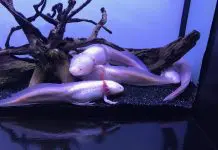

![Sick Axolotl, Fungus, Stress Symptoms [Axolotl Illness Guide 2025] Axolotl fungus](https://exopetguides.com/wp-content/uploads/2018/06/axolotl-218x150.jpg.webp)
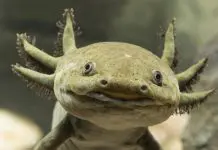
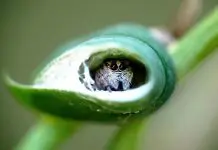
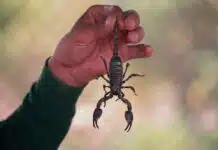
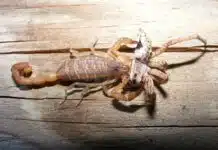
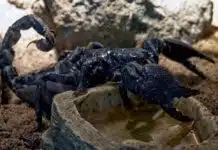











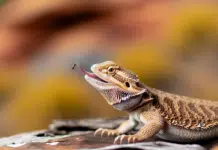
Nice and informative article. Useful information.